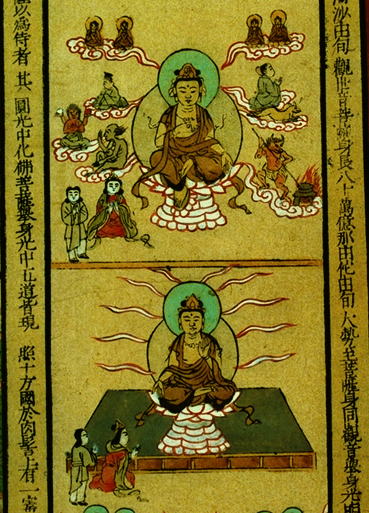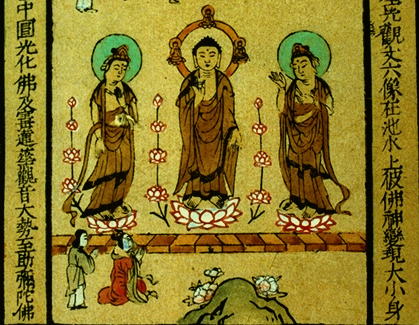
Contemplation of the image of Amida and Amida himself.
Illustrated
(16-21)
Illustrations from the Taima Mandala
By Hisao Inagaki
 Contemplation of the image of Amida and Amida himself. |
| 8) contemplation of the image of Amida |
| 9) contemplation of Amida himself |
 Contemplation of Avalokiteshvara (Kannon) and Mahasthamaprapta (Seishi) Bodhisattvas |
| 10) contemplation of Avalokiteshvara |
| 11) contemplation of Mahasthamaprapta |
 Contemplation of the aspirants themselves as they are born in the Pure Land |
| 12) contemplation of the aspirants themselves |
 Contemplation of Amida and the two bodhisattvas |
| 13) contemplation of Amida and the two bodhisattvas |
参考稻垣久雄教授的英文版曼陀罗图解
汉译经文配图:肖越(慈光居士)